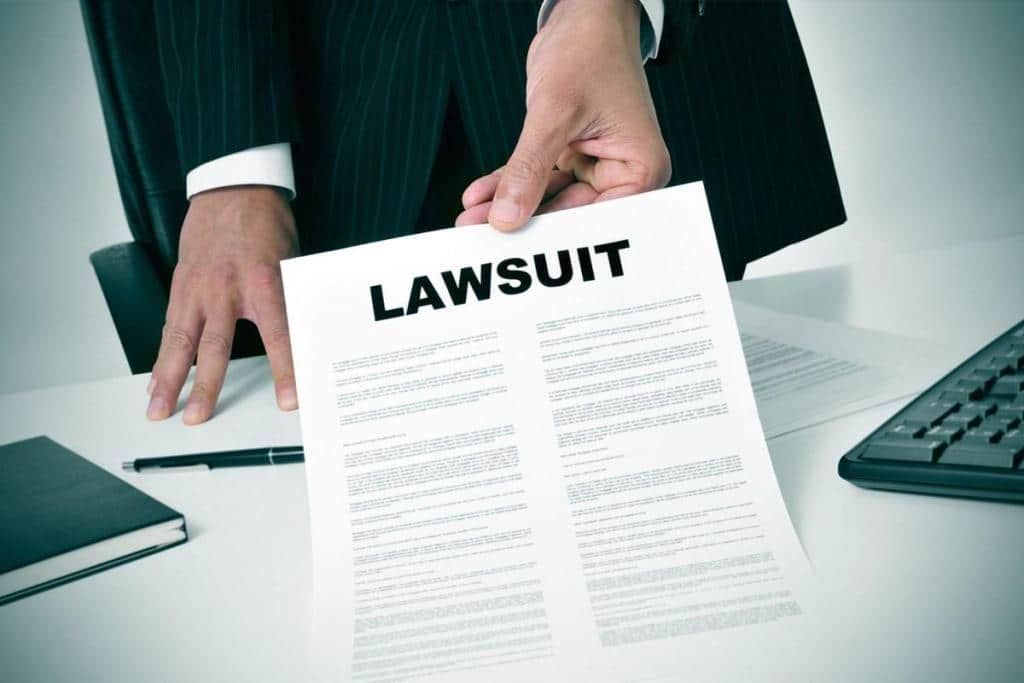Learning
Filing A Lawsuit – The Steps & Process

If you find yourself in a situation where you need to file a lawsuit, it’s important to understand the process and what to expect. This guide provides an overview of the steps involved, and it’s designed for companies and individuals who are new to the process, but even experienced litigants may find some helpful tips.
Additionally, recent news AB refusing to SI out the Arkansas Times news organization refused to sign a pledge – mtsu encyclopedia refusing to sign a pledge sent by the University of Arkansas highlights the importance of protecting freedom of the press and the First Amendment rights. So, whether you’re considering taking legal action or just want to know more about what happens during a lawsuit, read on.
What is a lawsuit and what can it be used for?
A lawsuit is a formal legal action through which you seek to redress an injury, loss or harm. Let’s say that someone trespasses on your property and damages it. If that person refuses to pay for the damage or offer some other form of compensation, you might want to file a civil lawsuit against them (you’d file in civil court instead of criminal court because this is a dispute over money).
If you win, the person would then be required to pay for the damages. You can file a lawsuit against an individual, corporation or even government entities such as the police department if they’ve done something wrong and harmed you.

The Steps Involved In Filing A Lawsuit
There are two main steps involved in filing a lawsuit: (a) preparing and filing the complaint; and (b) litigating or actually resolving the case.
A. Preparing and Filing The Complaint
Step 1: Gather Evidence
Gathering evidence is an important first step because it supports your claims that the other party did something wrong, thereby entitling you to certain remedies. The evidence must be such that it would be admissible in court. You can either hire a private investigator or use publicly available resources, including the Internet, to collect this information.
Step 2: Draft The Complaint
While you can hire an attorney or use software programs to help you with this step, it is fairly straightforward. In fact, most court rules require that complaints be relatively simple and concise, so you may even be able to prepare the complaint yourself.
Specifically, the complaint sets forth what your claim is and what you want the other party to do or stop doing. Be sure not to put anything extra in the complaint.
Step 3: File The Complaint
When it comes time for filing the complaint, check with your jurisdiction’s local rules to determine where and how you can file your complaint. For example, expats in Thailand seek the aid of Bangkok litigation lawyers to ensure their case would have the right venue.
Some courts have a small claims division for actions involving relatively small amounts of money, so be sure to check those rules as well. In most states, after filing the complaint, you will receive a court date about 2-3 weeks later.
B. The Litigation Process
Step 1: Serve The Defendant
After you file your complaint, typically the court will send it to the defendant. Before the defendant can respond or show up in court, they must be served with a copy of your complaint. If you used an attorney to draft and file your complaint, chances are good that he/she would also serve the complaint on your behalf.
In fact, it is common for plaintiff’s attorneys to hire a third-party service to handle this process. You can also try to do it yourself by going directly to the defendant and serving him/her with a copy of your complaint.
Step 2: The Defendant’s Response
The defendant must respond within a specified time period after being served with your complaint. There are generally three different types of responses that could be filed: (1) an answer; (2) a motion to dismiss, and (3) a motion for summary judgment.
a. An Answer
An answer is simply the defendant’s response to the allegations in your complaint. The answer often denies or “pleads” certain facts. It can also raise new claims or defenses against you, so it is important that you review the answer carefully to see if they have done this.
A defendant might have a few weeks after being served with your complaint to file his/her answer. If he/she misses the deadline, the defendant may still be able to respond later on if he/she gets the court’s permission.
b. Motion To Dismiss
A motion to dismiss is a legal request to have your case thrown out of court because certain claims or defenses cannot be heard by the court for technical reasons. For example, some complaints must be filed within a specific period of time, and if they’re not, then the defendant can file a motion to dismiss.
The court will hold a hearing on this motion, and if it agrees with the defendant’s argument, then your case would be dismissed.
c. Motion For Summary Judgment
A motion for summary judgment is filed by either party when he/she believes that there are no facts that could reasonably result in their opponent’s favor. In other words, a motion for summary judgment is filed when the defendant believes that even if all of the facts were known he/she would still win the case.
The court will hold a hearing on this motion as well, and if it agrees with the defendant, then your case would be over without going to trial.
Step 3: The Trial
If the defendant does not file a response or if he/she fails to have the case dismissed, then you would proceed to trial. At trial, you and your witnesses would testify under oath, and any relevant evidence would be introduced into the record. Afterwards, the judge or jury makes a decision based on what has been presented.
Step 4: Appeal
If the defendant wins, then you have the right to appeal to a higher court where another judge would review all of the trial proceedings and evidence to ensure that the law was interpreted and applied correctly. If you win, then there is no further action necessary. However, if you lose at this level, then the defendant could also appeal the decision to a higher court, so it’s possible that there could be one or two rounds of appeals.
Step 5: The Settlement
Another option at this point would be to negotiate a settlement with the defendant if you feel that your case is strong enough to win, but not necessarily as strong as it would need to be for a full trial.
Avoiding The Litigation Process Entirely
If possible, try to settle out of court before any formal proceedings begin. This way you will save money, time and the stress of litigation. It’s also possible that it would be less expensive to settle with the defendant after he/she files an answer or before a summary judgment is issued.

There are other ways in which your case could end before trial or Interpol red diffusion, for instance, if either party dies during the course of the proceedings. If one of the parties is a minor, then his/her parents may need to ask the court to end the case if they do not approve of what their child wants to do with it.
If you’re thinking about filing a lawsuit, you will want to read this guide first. Whether you’re considering suing a business or another individual, you will know what to expect once your case is underway.
Also Check:
6 Preparation Tips From a Child Custody Attorney
5 Ways a Car Accident Lawyer Can Help You






























